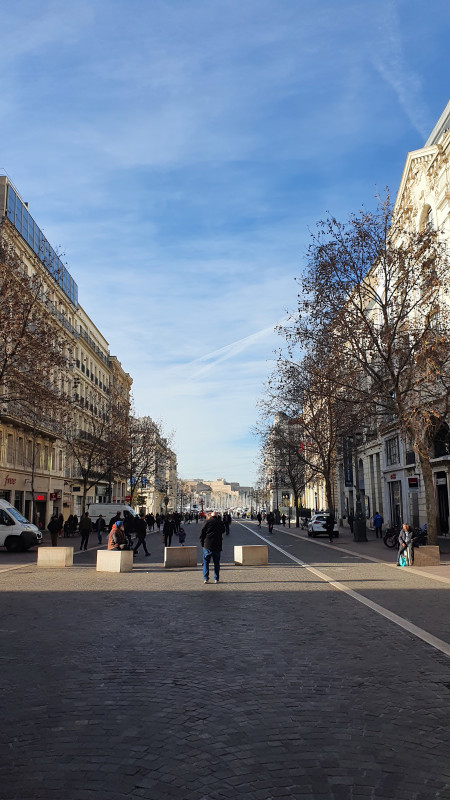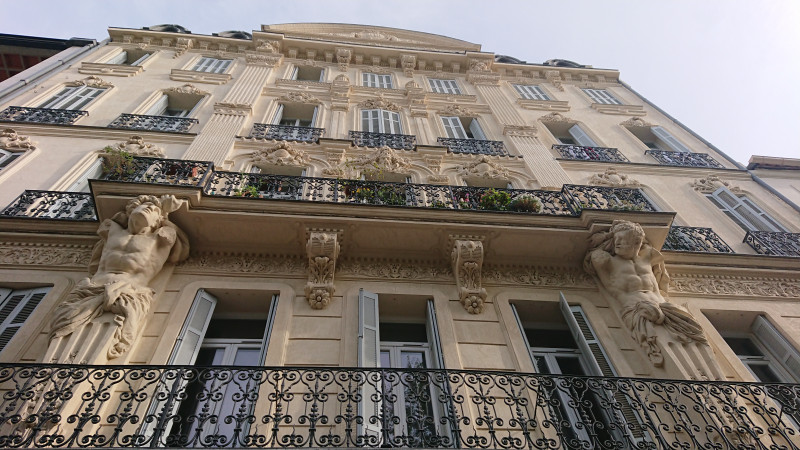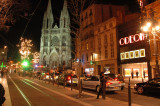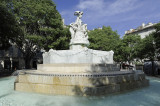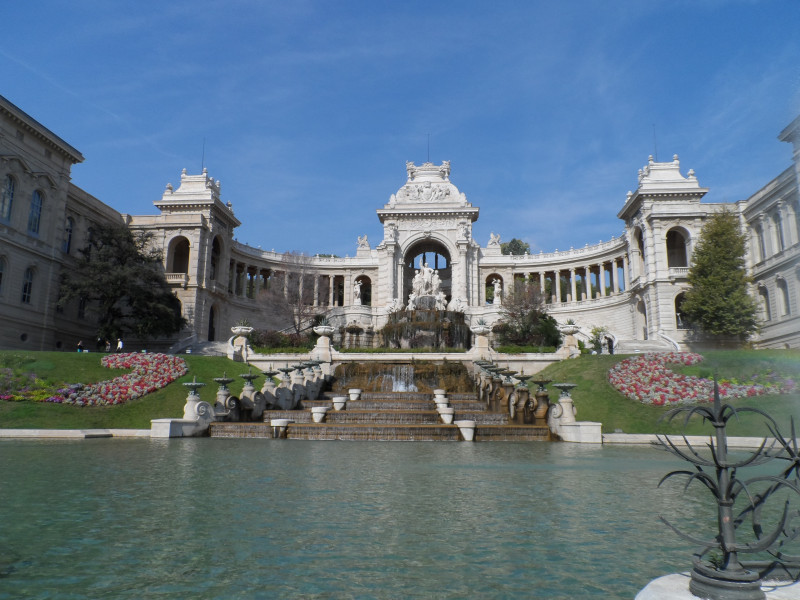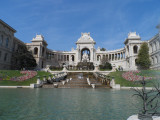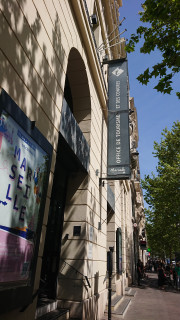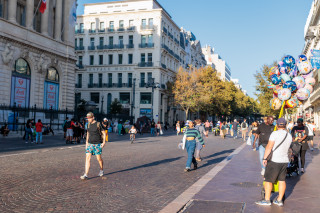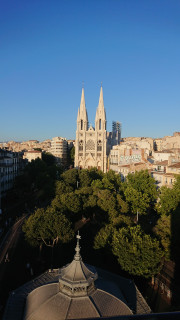A stroll through 19th-century Marseille
Cultural Pedestrian sports Hiking itineraryPresentation
This urban walk starts on the Canebière: it will lead you to the Palais Longchamp and its monumental fountain.
The route follows the Cours Saint Louis, the "Petit Cours" which takes its name from Louis d'Anjou. This is where the first santon fair was held in 1803. Then we enter the Noailles district.
In a colorful effervescence, dive into the Mediterranean cultures and discover the different stalls. Once you have crossed the boulevard Garibaldi, you reach the rue du Théâtre Français. Italian style theater and baptized for a time "French theater" to mark its vocation dedicated to the French literature.
Then you reach the upper part of the Canebière again. There we find a self-service book terminal in the shape of a giraffe to pay homage to the famous Zarafa, evoked in the urban stroll that leads to the Prefecture and the Monument aux Mobiles which celebrates the soldiers of the Garde Mobile of the Franco-Prussian war of 1870.
At the very end of the Canebière, you find yourself facing the Saint-Vincent de Paul church, nicknamed "les Réformés" because it is located on the site of the chapel of the Augustins Réformés. Its 2 spires rise 70 meters above the Canebière.
As you walk up the majestic avenue of plane trees on boulevard Longchamp, you will see on your right the mansion that houses the Grobet-Labadie museum. To end this urban stroll, you can discover the Palais Longchamp which was built to celebrate the arrival of the waters of the Durance in Marseille. Discover also its museums and its English garden.
In a colorful effervescence, dive into the Mediterranean cultures and discover the different stalls. Once you have crossed the boulevard Garibaldi, you reach the rue du Théâtre Français. Italian style theater and baptized for a time "French theater" to mark its vocation dedicated to the French literature.
Then you reach the upper part of the Canebière again. There we find a self-service book terminal in the shape of a giraffe to pay homage to the famous Zarafa, evoked in the urban stroll that leads to the Prefecture and the Monument aux Mobiles which celebrates the soldiers of the Garde Mobile of the Franco-Prussian war of 1870.
At the very end of the Canebière, you find yourself facing the Saint-Vincent de Paul church, nicknamed "les Réformés" because it is located on the site of the chapel of the Augustins Réformés. Its 2 spires rise 70 meters above the Canebière.
As you walk up the majestic avenue of plane trees on boulevard Longchamp, you will see on your right the mansion that houses the Grobet-Labadie museum. To end this urban stroll, you can discover the Palais Longchamp which was built to celebrate the arrival of the waters of the Durance in Marseille. Discover also its museums and its English garden.
Practical information
- Route :
- Signposted route
- Distance (km) : 2.1
- Daily duration (minutes) : 60
- Route : Aller / Itinerance
- Route : 58
- Visits :
- Average individual visit length (minutes) 60
- Services :
- Pets welcome
- Levels of sporting experience :
- Level green –very easy
- Natures field :
- Hard coating (tar, cement, flooring)
- Suitable for city strollers
- Park :
- Calanques National Park
Tarifs
Free access.
Contact
A stroll through 19th-century Marseille
Départ Office Métropolitain de Tourisme et des C
11 La Canebière
13001
Marseille
Phone : +33 8 26 50 05 00
- Spoken language(s) :
Destination
Balade dans le Marseille du XIXème siècle
Départ Office Métropolitain de Tourisme et des C
11 La Canebière
13001
Marseille
GPS coordinates
Latitude : 43.296111
Longitude : 5.376111
We also suggest ...
Located at the start
Water sports
Located at 11, la Canebière, close to the Vieux Port, it enjoys a privileged position in the heart of the city, accessible by the Vieux Port metro ...
Course
Historic site and monument
The Canebière was built in 1666 when Louis XIV gave instructions for the city to be increased in size. The name comes from the Provençal "Canebe" ...
Historic site and monument
The neo-gothic church at the end of the 19th century was designed by" Abbé Pougnier", builder of numerous religious buildings in Algeria, Tunisia and...
-
Religious patrimony :
- Church



